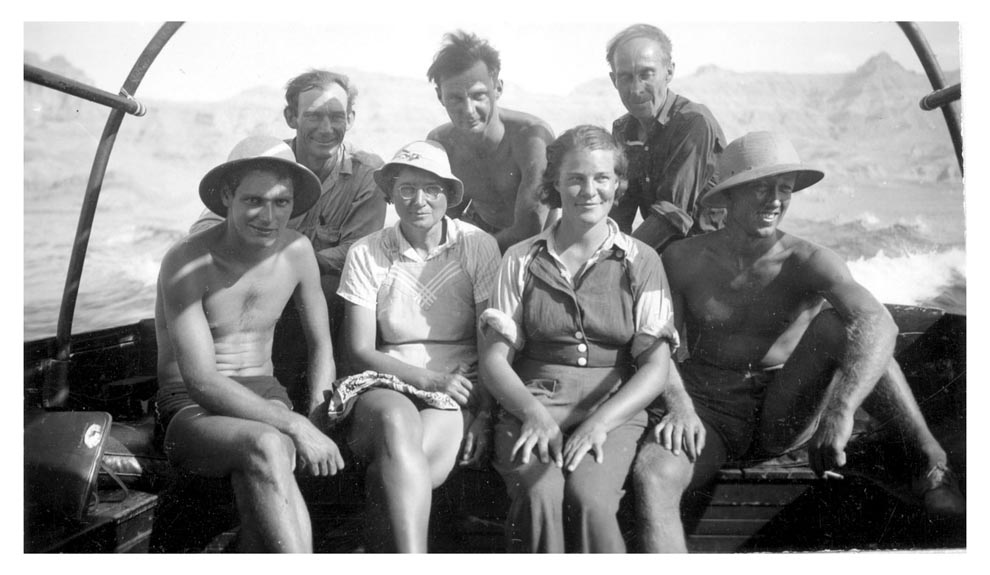
“You will come back changed. The river will change you.” —Father E.V. Jotter
The year was 1938.
The first-ever federal minimum wage was set at 25cents an hour. Snow White and the Seven Dwarfs was the first full-length animated feature to be seen in theaters. Its song “Whistle While You Work” topped the charts. Superman debuted in the pages of Action Comics.

The Great Depression was almost in the rear-view mirror. Men in the Civilian Conservation Corp planted trees and built fire lookouts. President F.D. Roosevelt was given a map that listed a network of superhighways. At that time, no USA superhighways existed.
With women’s tenacity and intelligence, two pioneering botanists began their historic boat trip down the Colorado River and through the Grand Canyon to survey the plant life on their daring 43-day journey.
Elzada Clover and Lois Jotter’s plant list, including four new cactus species, would become vital for those wanting to protect and restore the river ecosystem. The two women were botanists at the University of Michigan. They set off on the Green River in Utah with four companions and three boats. Their plan was to raft more than 600 miles down the Green and Colorado Rivers to Lake Mead, passing through the Grand Canyon en route.
Both women knew there would be discomforts, including the heat, the biting insects, and the nights lying awake in wet clothes. But they both thought of the plants they would discover. Jotter had boxed and labeled her possessions for disposition before departing for Utah. “Just in case.”
Their rations included canned fruit, vegetables, meat and canned spaghetti. Even their butter was canned. They ate Ry-Krisp crackers at every meal in lieu of bread and a powdered milk called Klim. They would re-supply at Lee’s Ferry.
They borrowed a can of green paint and put names to the boats’ prows. The lead boat was named Wen and the other two boats were named Botany and the Mexican Hat. In her journal Jotter wrote “I don’t feel at all scared yet. There is much singing and sitting on the sun deck. Surroundings so peaceful and quiet it sees they penetrate right into one’s soul.”
The Green River had waters that were a deep emerald hue. The Colorado, in contrast, was red as earth, red as blood. The Colorado was stained with the silt it carried. Here they saw netleaf hackberry and tamarisk. Lichen stuck filaments “like tiny pitons into the solid rock and hung on. Grass and cactus seeds were” blown into precarious pockets by chance,” Jotter wrote
Plant communities had both “destinies and disturbances “ that came from the bitter effects of farming and grazing the Great Plains into dust. In time, the natural world would recover.
Clover and Jotter brought knowledge and energy and passion to their botanical work. They saw the river for what it could be, harnessed for human use. This living system was composed of flower, leaf, and thorn, “lovely in its fierceness, worthy of study for its own sake,” Jotter wrote

